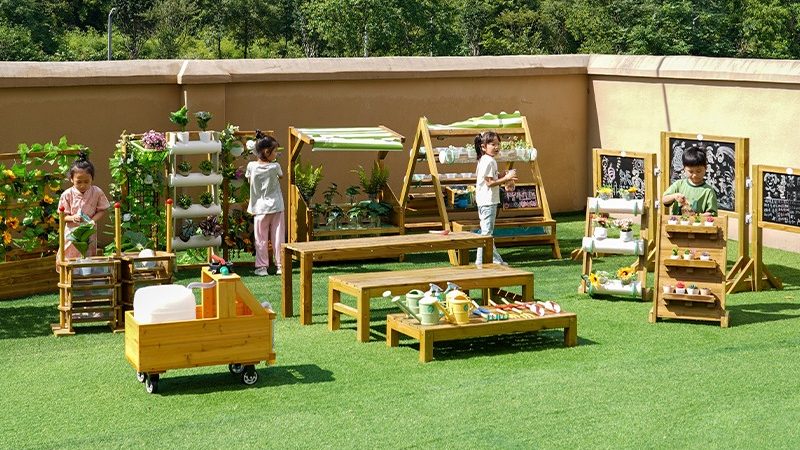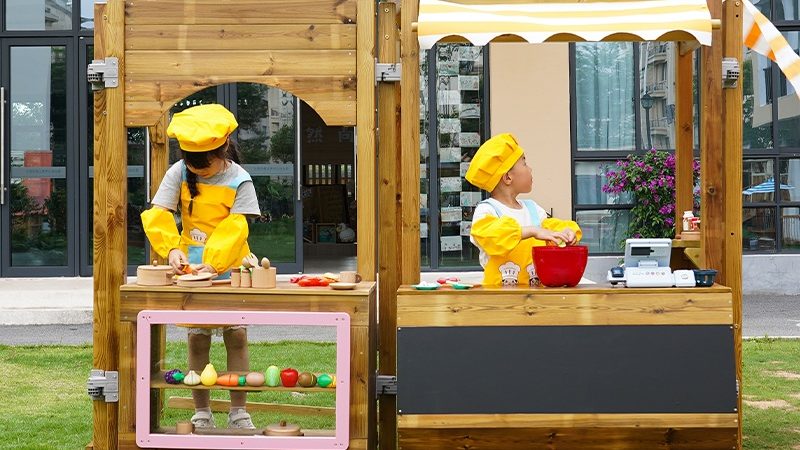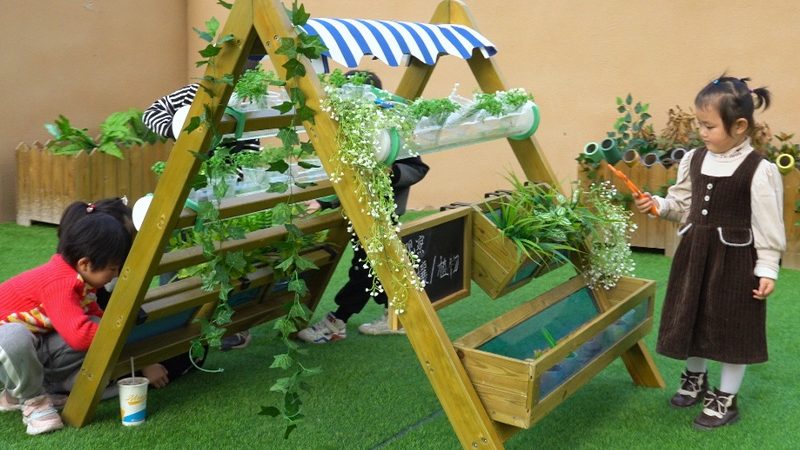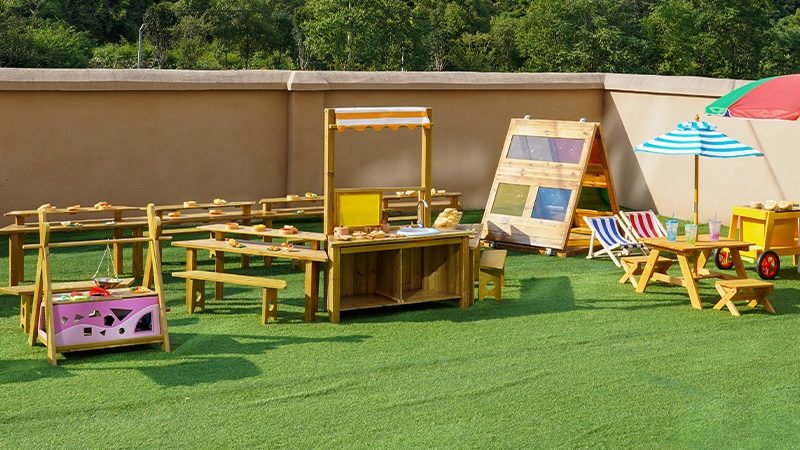Play Village represents a revolutionary approach to early childhood education that’s transforming how children learn through play. This comprehensive educational ecosystem combines the best of play-based learning methodologies with innovative wooden playground design to create immersive learning experiences.
Table of Contents
- What is Play Village?
- Scientific Foundation of Educational Play Learning
- Global Wooden Playground Development Trends
- Educational Benefits of Interactive Learning Spaces
- Core Functional Areas
- Professional Advantages of Wooden Learning Environments
- Success Stories and Case Studies
- Implementation Best Practices
- Investment Benefits
What is Play Village?
A Play Village is a comprehensive educational ecosystem designed for children aged 2-6 years. Unlike traditional playground equipment, these innovative learning environments integrate multiple zones that promote cognitive, physical, social, and emotional development simultaneously.

Core Components
Modern designs typically include:
- Restaurant and kitchen areas for role-playing activities
- Transportation zones with wooden vehicles and road systems
- Art creation spaces with outdoor easels and display areas
- Natural gardening sections for environmental education
- Social gathering areas like campfire circles
The Association for Childhood Education International recognizes these integrated learning environments as essential for holistic child development.
Scientific Foundation of Educational Play Learning
Research from the Child Mind Institute demonstrates that ages 3-5 represent the “golden season” of imaginative play. Children engaging in structured pretend play within these environments show:
- Enhanced executive function by 40%
- Improved language development compared to traditional classroom settings
- Stronger social-emotional skills through collaborative play
Evidence-Based Benefits
A comprehensive study published in the International Journal of Behavioral Nutrition and Physical Activity analyzing 247 research papers found that these educational environments significantly increase:
- Physical activity levels in young children
- Creative problem-solving abilities
- Peer interaction and communication skills
Global Wooden Playground Development Trends
Nature-Based Education Movement
The global shift toward outdoor education has accelerated adoption of these innovative learning spaces worldwide. Forest school programs and nature-based preschools increasingly incorporate these educational concepts.
Key driving factors include:
- Growing research evidence supporting outdoor learning benefits
- Post-pandemic demand for safe, open educational environments
- Increased environmental consciousness among educators and parents
Policy Support Worldwide
Singapore’s Early Childhood Development Agency (ECDA) mandates at least 30 minutes of daily outdoor activities for preschoolers. This regulatory support has made Singapore a leader in implementing these systems across international schools.
Educational Benefits of Interactive Learning Spaces
Physical Development Through Structured Play Activities
These learning environments excel at promoting both gross and fine motor skill development. Children naturally develop:
Gross Motor Skills:
- Balance and coordination through climbing structures
- Spatial awareness via transportation play zones
- Core strength from varied movement activities
Fine Motor Skills:
- Hand-eye coordination through wooden tool manipulation
- Precision movements in art creation areas
- Dexterity improvement via gardening activities
Cognitive Enhancement in Educational Play Settings
The multi-zone design of these learning environments stimulates various cognitive functions:
- Mathematical concepts through restaurant role-play and money handling
- Scientific thinking via gardening and natural exploration
- Language development through storytelling and social interaction
- Problem-solving skills in collaborative building and construction
Social-Emotional Learning
These environments naturally foster emotional intelligence development. Children learn:
- Cooperation through shared activities
- Empathy via role-playing different characters and professions
- Conflict resolution during group play scenarios
- Leadership skills when guiding activities
Core Functional Areas

Restaurant and Kitchen Zone
This central area promotes:
- Mathematical learning through counting, measuring, and money concepts
- Social skills via customer service role-play
- Cultural awareness through diverse food preparation activities
Equipment typically includes wooden stoves, serving counters, dining sets, and pretend food items.
Transportation Section
The transportation zone within these learning environments develops:
- Spatial reasoning through vehicle operation and navigation
- Rule understanding via traffic sign recognition and following
- Cooperative play during shared transportation scenarios
Natural Learning Garden

Gardening areas represent essential components that teach:
- Life science concepts through plant growth observation
- Environmental responsibility via sustainable practices
- Patience and care through long-term plant maintenance
Art and Creativity Spaces
Creative zones in these environments feature:
- Weather-resistant easels and art supplies
- Display areas for showcasing children’s work
- Storage solutions for ongoing creative projects
These areas support artistic expression while developing fine motor skills essential for later academic success.
Professional Advantages of Wooden Learning Environments
Material Science and Child Development
Research from Creative Play Solutions indicates wooden equipment offers superior benefits:
Sensory Development:
- Natural textures stimulate tactile learning
- Temperature regulation prevents extreme hot/cold surfaces
- Authentic wood scents provide multi-sensory experiences
Durability Benefits:
- 15-20 year operational lifespan
- Weather resistance with proper maintenance
- Natural aging that enhances rather than detracts from appearance
Environmental Education Value
Wooden installations teach children:
- Sustainable material choices and environmental impact
- Connection between natural resources and daily life
- Appreciation for craftsmanship and quality construction
Children using wooden equipment develop stronger environmental consciousness compared to those using plastic alternatives.
Success Stories and Case Studies
Singapore International School Model
The Stamford American International School facility serves as a global benchmark. Their comprehensive installation includes:
- The Shipyard: Pirate-themed area promoting imaginative play
- Discovery Zones: Open-ended exploration spaces within the learning environment
- Integrated Learning Areas: Seamless indoor-outdoor transitions
Results show 60% increased engagement in physical activities and 45% improvement in social cooperation skills.
University of Tennessee Research
Comprehensive studies comparing traditional playgrounds with these innovative environments found:
- Double the playtime in natural settings
- Increased aerobic activity by 30% in wooden areas
- Reduced sedentary behavior when children access diverse zones
European Adventure Playground Success
Berlin’s Kolle 37 demonstrates advanced concepts where children build and modify their own play structures. This model shows:
- Enhanced creativity through autonomous construction within structured frameworks
- Improved risk assessment skills in supervised environments
- Stronger community bonds through collaborative projects
Implementation Best Practices
Space Planning for Your Educational Environment
Successful installations require careful consideration of:
Safety Standards:
- Clear sightlines throughout the area for supervision
- Age-appropriate equipment sizing and challenge levels
- Compliance with local playground safety regulations
Educational Integration:
- Curriculum alignment with activity zones
- Teacher training for effective utilization
- Assessment systems tracking development within learning contexts
Investment Benefits
Educational Institution Advantages
Implementing these learning environments offers:
Competitive Differentiation:
- Stand out in crowded early childhood education markets
- Attract families seeking innovative educational approaches
- Demonstrate commitment to evidence-based teaching methods
Long-term Value:
- Wooden equipment maintains value over decades
- Reduced replacement costs compared to plastic alternatives
- Enhanced institutional reputation through educational leadership
Parent and Community Benefits
Families choosing schools with these facilities report:
- Increased child enthusiasm for school attendance
- Observable skill development across multiple domains
- Stronger parent-school partnerships through involvement

Conclusion: Transform Education with Play Village
Play Village represents the future of early childhood education, combining scientific research with practical implementation. These comprehensive learning environments address every aspect of child development while providing sustainable, long-term educational value.
By investing in a professionally designed system, educational institutions create competitive advantages while serving children’s developmental needs. The integration of natural materials, diverse learning zones, and evidence-based design principles makes these environments the optimal choice for forward-thinking educators.
Ready to revolutionize your educational approach? Explore our custom design services and discover how these innovative learning environments can transform your institution.
About Our Educational Solutions
As leading wooden educational equipment manufacturers, we specialize in creating custom installations for preschools worldwide. Our team combines international educational research with expert craftsmanship, ensuring every system meets the highest standards for safety, durability, and educational effectiveness.
Contact us today to learn more about implementing these learning environments at your institution and joining the global movement toward play-based learning excellence.